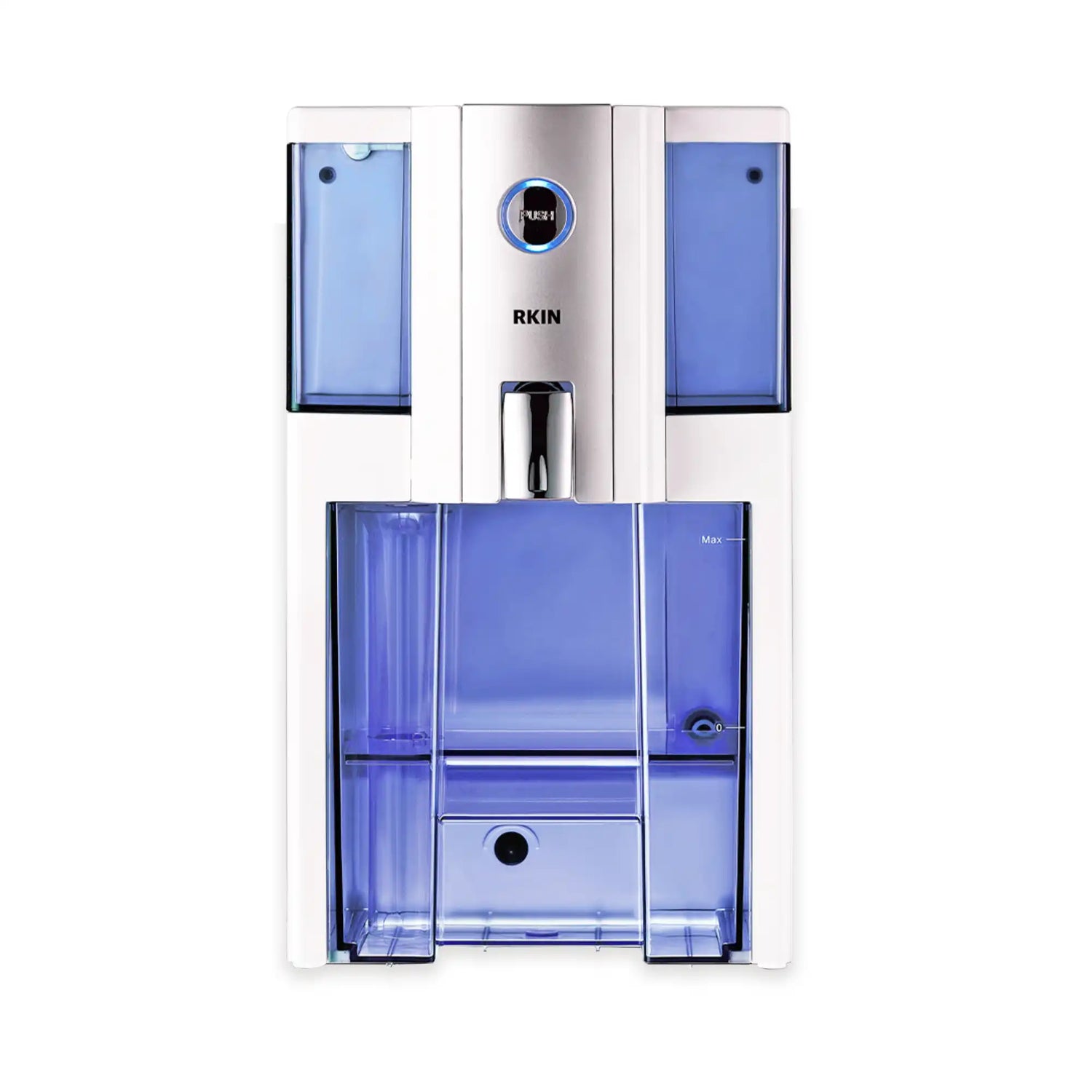
Getting a High TDS Reading with your Reverse Osmosis System?
Share
Total Dissolved Solids or TDS is a measure of the dissolved combined content of all inorganic and organic substances present in a liquid. TDS is sometimes referred to as parts per million (ppm). You can test water quality levels using a digital TDS PPM meter. A low TDS reading is typically a good indicator of purified water and usually, people are looking to keep the TDS levels of their drinking water at bay.
There are several possible causes of a high TDS reading from water that's been purified by reverse osmosis:
- The quality of the water source has changed.
- The post-filter is adding minerals to the purified water.
- The rejected water is being re-used (applies to countertop RO systems).
- The reverse osmosis membrane needs to be replaced.
- Incorrect testing due to TDS creep.
Now let’s delve a little deeper into how these scenarios can raise your water's TDS reading.
The quality of the water source has changed. The maximum concentration level set by EPA for TDS levels in municipal water supplies is 500 ppm. And, the TDS levels you ultimately get from municipal water supplies may fluctuate from time to time. The sources of the TDS present in the water can affect how it fluctuates. These sources are high flow rates, soil erosion, urban runoff, septic and wastewater overflow, and/or organic particles from plants and animals.
RO membranes, in general, remove 90% or more of the contaminants present in the water, including TDS. When the TDS levels of your water source changes, it will affect the quality of the purified water output from your reverse osmosis system.
The post-filter is adding minerals to the purified water. Another thing to consider is that RO systems usually come with a remineralizing post-filter that adds beneficial minerals to the purified water at the end of each filtration process. This would add to the TDS present in the purified water which will ultimately raise its TDS reading. This applies to the RKIN Zero Installation Purifiers with the AlcaPure post-filters installed inside them.
Not sure what a Zero Installation Purifier is? Read more about it here.
The rejected water is being re-used. With countertop RO systems, not discarding the rejected water and recycling it for a new batch would significantly raise the final TDS reading of your purified water. This is because the rejected water at the end of every cycle will have high concentrations of contaminants and simply topping it off to run another cycle will result in water output that has high amounts of impurities or TDS content.
The reverse osmosis membrane needs to be replaced. The typical RO membrane filters at .0001 microns or micrometers. This means that it’s only supposed to allow particles that are smaller than .0001 micrometers through its permeable membrane and “rejects” any particles that are bigger in size.
If the RO membrane is not working properly, you may get a higher TDS reading with your filtered water. One possible reason for this is that the permeable membrane inside may have ruptured, allowing bigger particles or contaminants to pass through the membrane.
RO membranes may rupture due to high water pressure or high chlorine content due to an exhausted, thus ineffective carbon pre-filter.
Measuring the TDS reading of your water before and after it passes through the RO membrane is a great way to calculate the RO system’s rejection rate or to make sure that RO membrane is working properly.
Incorrect testing due to TDS creep. Standing water within the filters of an RO system can slowly accumulate more total dissolved solids. This extra TDS “creep” can be from the carbon or minerals within the post-filter or from the mixing of the pre-filtered water and the filtered water inside the RO membrane.
When testing the TDS levels of the filtered water from the reverse osmosis system, it’s important to first flush out the water with TDS creep by discarding the first 1-2 cups of water coming out of the system and only test water that follows. Otherwise, you are testing the water with “TDS Creep” and not the actual performance of the membrane.
Because alkaline post-filters return minerals into the purified water, it can be unclear as to how much impurities the RO membrane is actually removing from the water source. However, there is a way to get a true RO membrane rejection rate.
One of our customers wrote a detailed review on how he got the accurate rejection rate from his Zero Installation Purifier's RO membrane below:
=========
Carlos E.
United States
This filter DOES reduce TDS properly, you just have to test the water correctly (updated review).
I tested the water myself using a TDS meter because I saw some other users in reviews talk about it failing to reduce TDS to the proper levels for an RO filter. I thought I had confirmed that the RO filter didn't reduce TDS as expected and was about to return the device thinking they were falsely advertising the performance of the RO system, but thankfully I had a back-and-forth correspondence with the company owner dissecting my testing method and found that my testing methodology was incorrect for this system. Let me explain here for any users wanting to verify for themselves the filter's water quality.
First, for verifying the reduction of TDS you cannot test the water output from the top tank because it passes through a post filter for remineralization (which increases the TDS at the end). You must open the back of the machine and use the tube that exits the RO filter and enters the post filter by disconnecting it from the post filter entry point (see instructions for how to change filters). You must also let the machine run a couple full cycles and throw away the water if these are new filters (per the instructions).
At this point, if you turn on the cycle and collect a cup of water from the tube and test it, you may think this is the correct TDS reading but that also would be wrong. When you begin the cycle, you must collect some initial water from the tube and set it aside because the initial spurt of water will have higher TDS (due to TDS creep). This small amount of higher initial TDS would be completely dispersed if you were instead collecting from an entire reservoir of filtered water. If you collect about a cup of water from the tube and set it aside, then collect and test a second cup, you will find the proper TDS level for an RO filter (under 50ppm).
In other filters without a post filter like the AquaTru, you would test the filtered water from the reservoir and have found the correct TDS right away. However due to the post filter (which is a huge advantage of this system due to the replenishing it does of critical minerals) it makes it more difficult for those that like to verify the RO water quality. Hope this review helps give others the confidence I now have that this filter does indeed produce excellent quality reverse osmosis water! See for yourself using the above method!
======




